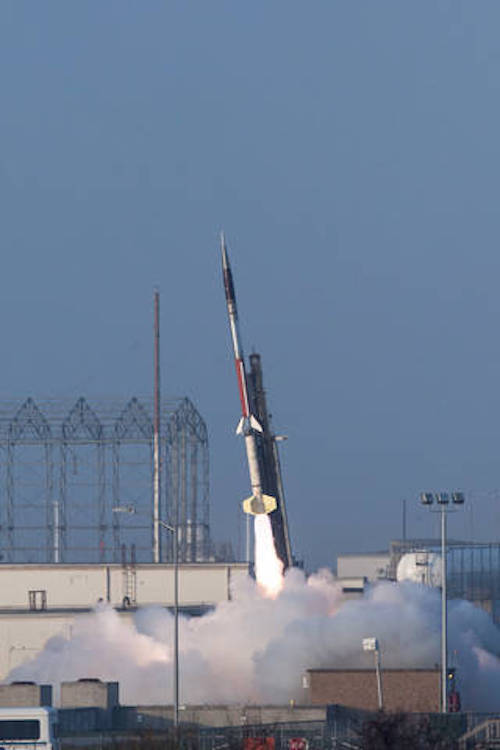18.08.2021

Students from eight community college and university teams will see more than a year of effort take flight into space with the launch of Terrier-Improved Malemute sounding rocket from NASA’s Wallops Flight Facility in Virginia on Aug. 19.
The projects are a mix of technology and science experiments, including the development of a 360-degree camera for use on sounding rockets; space debris removal concepts; a solar array deployment system for CubeSats; and collection of particles in space for research on the origins of life.
The launch of the 44-foot tall rocket is scheduled between 5 and 8:30 p.m. EDT. The backup launch dates are Aug. 20-21.
After flying to around 91 miles altitude, the payload with the experiments will descend by parachute and is expected to land in the Atlantic Ocean, about 64 miles off the Virginia coast, 15 minutes after launch. The experiments and any stored data will be provided to the students following sea recovery of the payload.
The NASA Visitor Center grounds at Wallops will not be open for viewing the flight. The rocket launch is expected to be visible from the Eastern Shore of Virginia and Maryland and southern Delaware.
Live coverage of the mission is scheduled to begin at 4:40 p.m. on the Wallops YouTubesite.
The experiments are being flown through the RockSat-X program in conjunction with the Colorado Space Grant Consortium. RockSat-X is part of a three-tier program that introduces secondary institution students to building experiments for space flight and requires them to expand their skills to develop and build more complex projects as they progress through the programs. RockSat-X is the most advanced of NASA’s three-phase sounding rocket program for students. The RockOn launches are at the entry level, then progress to the intermediate level RockSat-C missions, then RockSat-X. RockSat-X experiments are flown approximately 20 miles higher in altitude than those in the RockOn and RockSat-C programs, providing more flight time in space.
Giovanni Rosanova, chief of the Sounding Rockets Program Office at Wallops, said, “The RockSat-X program provides the opportunity for students to take what they learn in the classroom and expand science research and technology for future spaceflight.”
A recent successful example is from the University of Kentucky. After testing reentry capsules and thermal protection systems on previous RockSat-X flights, the Kentucky team launched three capsules Aug. 10 on Northrop Grumman’s Antares rocket from Wallops. The capsules will be deployed from the Cygnus cargo spacecraft in November, after departing the International Space Station, to test thermal protection systems upon reentry.
Participating institutions in the 2021 RockSat-X flight are the Arapahoe Community College in Littleton, Colorado; Red Rocks Community College in Lakewood, Colorado; College of the Canyons in Santa Clarita, California; the University of Puerto Rico, San Juan; Virginia Tech, Blacksburg; University of Colorado, Boulder; Northwest Nazarene University in Nampa, Idaho; Kauai Community College in Līhuʻe, Hawaii; and Colorado School of Mines, Golden.
Additional participants from West Virginia include West Virginia University, Morgantown; Blue Ridge Community and Technical College, Martinsburg; West Virginia State University, Institute; and West Virginia Wesleyan College, Buckhannon.
“This will be the tenth flight of a RockSat-X payload,” said Chris Koehler, director of the Colorado Space Grant Consortium. “The RockOn and RockSat programs provide the opportunity for undergraduate students to increase their science, technology, engineering and mathematics skills through hands-on projects. This enables these students to obtain the qualifications needed to obtain positions in the aerospace industry, government and academics when they graduate.”
NASA's Sounding Rockets Program is managed at the agency's Wallops Flight Facility, which is managed by NASA's Goddard Space Flight Center in Greenbelt, Maryland. NASA's Heliophysics Division funds the Sounding Rockets Program for the agency.
Quelle: NASA



